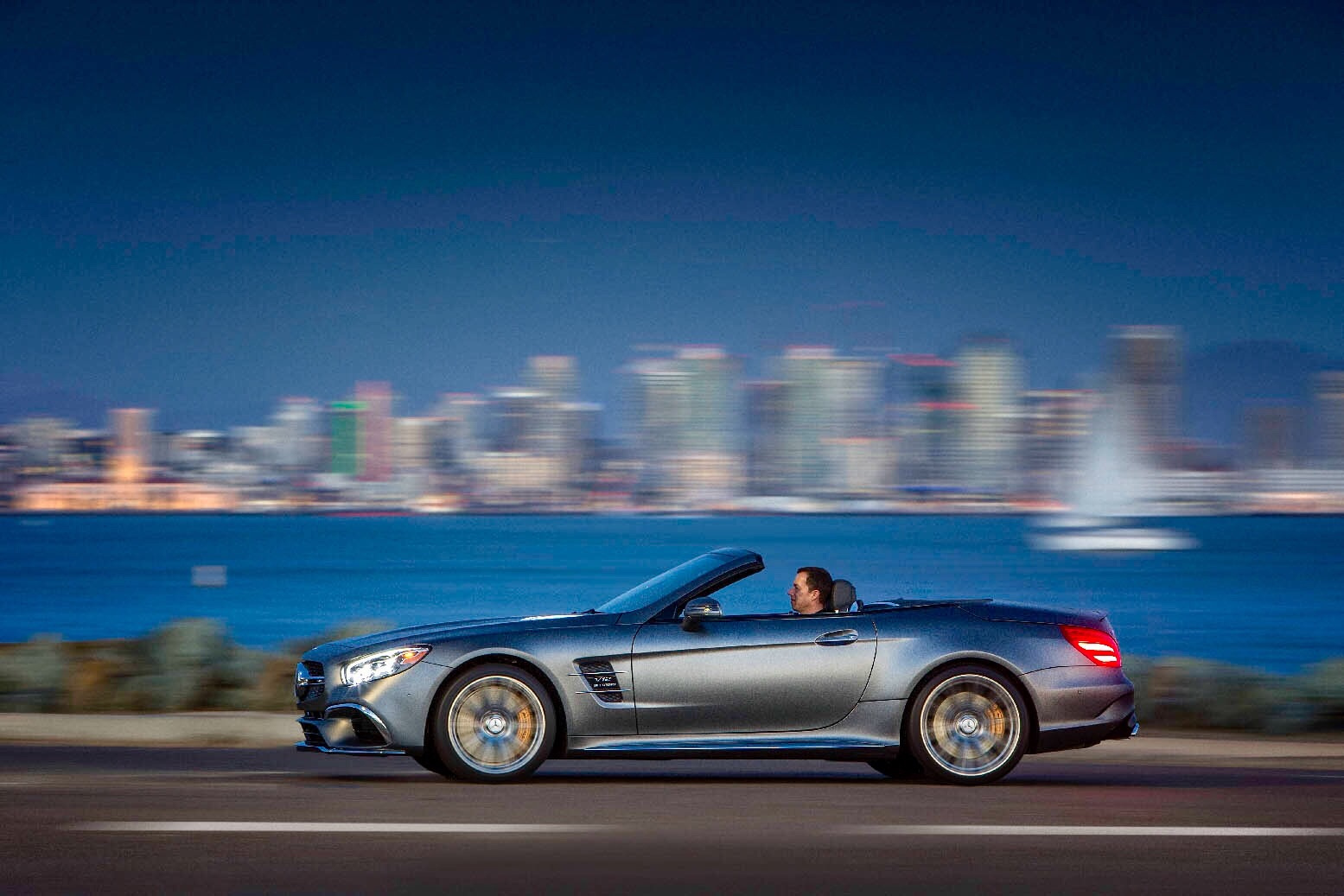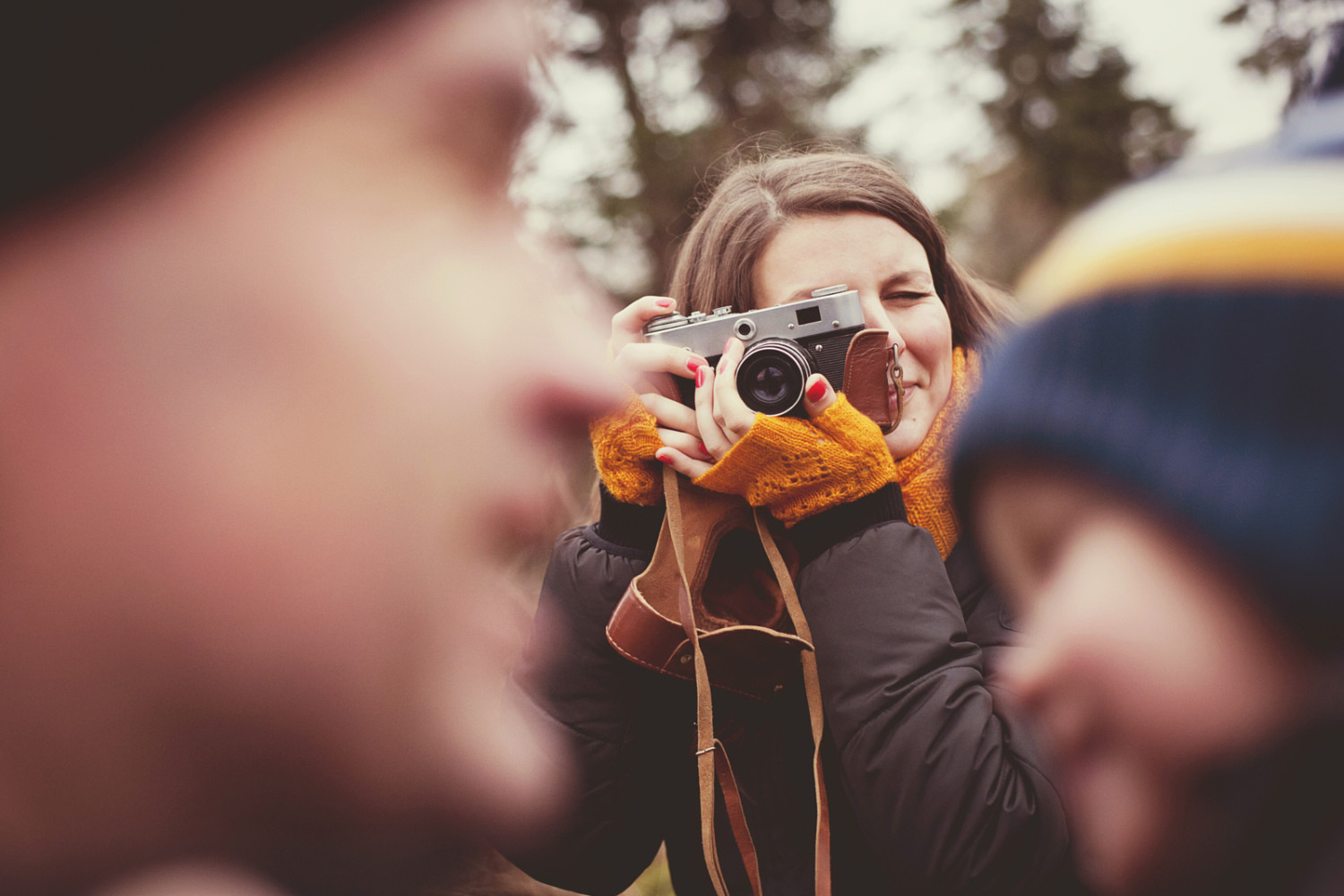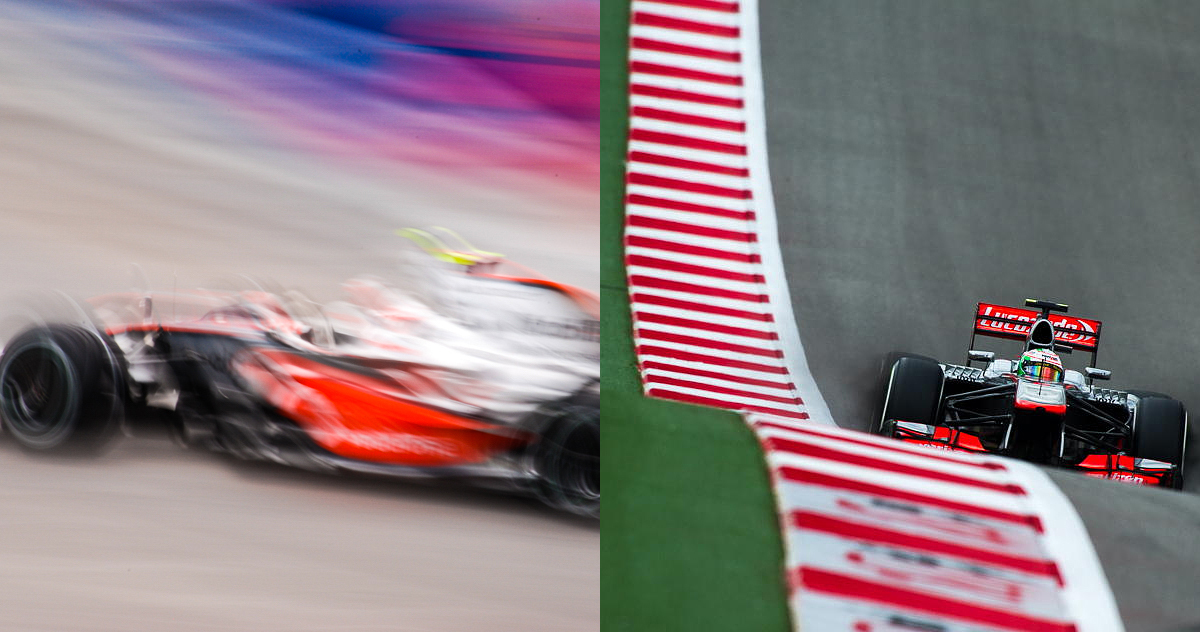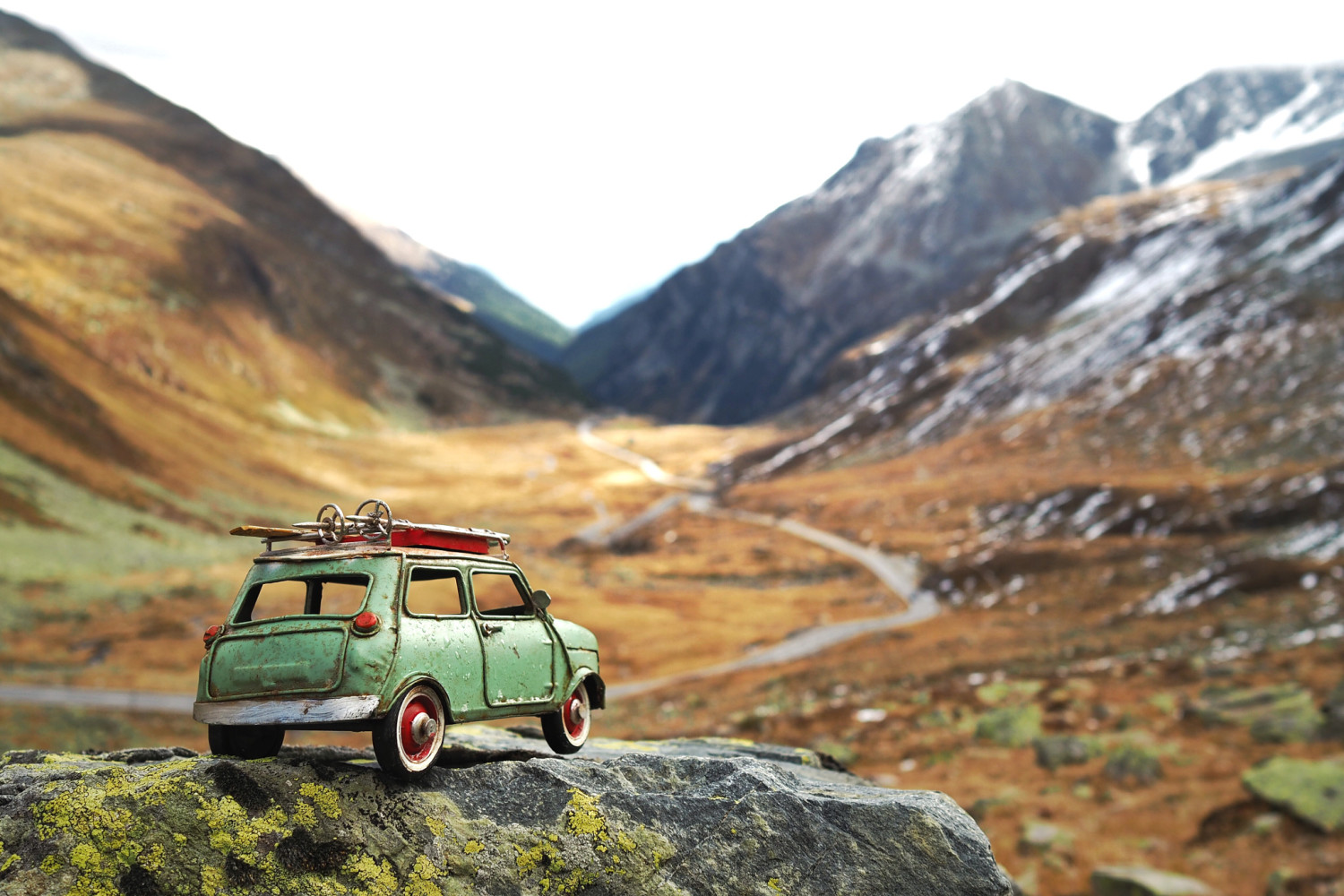Carsten Christian studied journalism and communications at Hamburg University. As an online and social media editor, he writes about new media and digital trends. Photography and film are also topics he focuses on.
From a high-gloss format to “dirty” snapshots — car photography has seen many changes in the last few years. It has become more diverse, and the industry more bold. Manufacturers no longer want to only show the vehicle in perfectly-staged advertising images. They want the vision of a car in its natural surroundings — on the road, in motion. Dust and dirt are actually appreciated.
Three car photographers (one of them is also a filmmaker) are changing the game and shaking things up with their striking work at the very moment:
Having worked for GQ and Playboy, Florian Roser is also an editor for the German lifestyle site uberding. He has claimed to have never left his apartment without his Canon 5D.
Andreas Lindlahr started his career as a photographer back in 1978. His pictures appeared in big German publications like Stern and Spiegel, and in popular car magazines. Next to his passion for cars, Andreas loves to go sailing.
Vincent Urban works as a freelance filmmaker and video editor. He has a big and loyal fan base on Vimeo, where he captures his own experiences from multiple road trips. For one of his latest films, Vincent explored Portugal and Spain on behalf of Mercedes-Benz, driving from Málaga to Porto.
We caught up exclusively with these three, and talked with them about the challenges, trends, and appeal of car photography. Read on!
What aspects of the car as photo model appeal to you?
FLORIAN: A car is as it is. The appealing task for the photographer is to identify its strengths and to put these in the limelight. The setting and background play an essential role. I’m just a big car enthusiast. When there’s a real dream on four wheels standing right in front of me, my pulse rises – with my photos, this feeling is what I want to trigger in the observer.
VINCENT: In my view, cars embody freedom and individuality which are both central motifs of my travel movies. The thought of getting into your car and just driving off is a dream to many – and it is exactly this dream that I try to tell.
ANDREAS: In the mid-eighties, I discovered car-photography. It was and still is an adventure, a constant challenge with an infinite amount of possibilities. Cars – just as yachts, airplanes or buildings – offer great aesthetics in my view.
What do you have to pay special attention to in car photography? How do you make a car look good?
ANDREAS: Optically, the car should always be related to its surroundings. Moods, people or landscapes in particular make a car image richer – and of course movement. This makes it a living product.
VINCENT: I agree, dynamics play an important role. In addition to that, I put a special emphasis on the beautiful natural light in the early morning or the late afternoon. Sometimes a hand-camera helps so the shots won’t look to clean. In that case the exposure times are of special importance.
What is important to you when cooperating with a car manufacturer?
FLORIAN: I prefer to work with manufacturers who like my style and touch. Those who want high gloss-ads looking as if they were animated should call somebody else. My way of working consists of a certain freedom, because I prefer things to be truly realistic and rough. With me, a car may well be dusty when shooting in the desert.
VINCENT: Same with me. I am the wrong one to go to, if car manufacturers expect chic, polished car films. In my videos, everything is more about the voyage than about the car itself. Of course, I arrange with the client what content and feelings are to be transported in such a trip, but mainly, I am rather free in this respect.
Which trends are to be found in car photography at the moment?
ANDREAS: I observe a trend towards the “snapshot” – a momentary shot, not quite precise but full of expression. The perfect picture is going out of fashion. It is beautiful and razor-sharp but it can be boring as well.
FLORIAN: I would agree that today everything may be a bit more natural. It does not have to be a perfectly illuminated or even computer-generated shot. As long as the quality and the imagery are correct, there may even be a disruptive element in the picture. In addition to that, shots from the ego perspective are very popular at the moment. They give the impression that the car was really driven and not just photographed as a prototype in a studio.
VINCENT: I think it matters really what the client wants: when I am interested in selling a car, I want to see a film with the car in the center. And then there are films showing the voyage, the experiences and adventures with the car. I like it that several manufacturers aim for that now – because a car is more than just a means of transportation or a status symbol.
How do you prevail against the strong competitors in the automotive field?
FLORIAN: As a blogger and photographer, I have a different approach and do not compete with the really big ones and their elaborate high-gloss productions. It is my advantage that I can offer a big network and reach. As digital native, I know what’s going on in the social networks. But to get to this point it was a trial of patience.
ANDREAS: I had to be tenacious, too – by doing what I can do best and what I love. People recognize a passionate photographer. There is an element of luck in it too. I see myself rather as a photographer in general than as a car photographer. I love nature for example. Everything is about recognizing beauty and capturing it.
Do car manufacturers approach you with inquiries?
ANDREAS: Ever since I started photographing cars, I never had any difficulties in finding customers. One problem is, however, that there may be an exclusive claim – for an independent photographer this is a disadvantage in the long run. Therefore, you should remain versatile and have as many different customers as possible.
FLORIAN: From my perspective, this varies a lot and there is still a lot room for improvement. Often, when I find myself at an official driving event, time is short. I prefer to borrow the car for a few days in order to do my own thing. When I have specific ideas, I approach the manufacturers proactively.
What equipment do you use for photography or filmmaking?
ANDREAS: My equipment is comprised of a CANON EOS 1DX, models with a higher resolution like the CANON EOS 5D MKII, as well as a Panasonic GH4 for the professional drone. But depending on the situation, I also experiment with a GoPro and other toys. A photo “just” has to be good – no matter what it was shot with.
FLORIAN: My standard equipment consists of a Canon EOS 5 D Mark III – with that camera, you can do almost anything. Depending on the situation I use a 50 mm or recently even a 135 mm by Canon – when zoom is required. Depending on the light, pole-, ND- or gray-graduated filters can be helpful. But generally speaking, my credo is rather “quick and dirty”. When possible, I shoot freehand.
VINCENT: Me too, I film simply freehand for the most part. Currently, I mainly work with a Sony Alpha7s Mark II. For time-lapses and photos in general, I use a Canon 5D Mark III like my two colleagues.
Very little photo editing or with a strong “Wow”-effect – which side do you see yourself on?
VINCENT: My approach is probably a bit more unorthodox. I want to narrate the car not only as the protagonist but as a perspective as well. This is why I film with the hand camera – primarily because a shaky view of the passing landscape is what you get when you’re on a road trip. It is about feeling the car and about showing the places, people and cultures during the trip.
FLORIAN: Very clear and natural. That meets my taste and above all, reality. The car has to impress in everyday life on the street. A perfectly animated photo is not worth it when the car looks only half as sporty in real life. I simply do not enjoy sitting in post-production for hours. My focus is rather on photos which have been shot live, which are of a high quality and special in their look.
ANDREAS: You don’t need Photoshop but it expands creativity enormously. That being said, an image should always remain credible. I perceive every technical innovation as an enrichment; I love playing and experimenting with it.
Which advice would you give aspiring car photographers?
FLORIAN: Just go out and play. My first car shots would be absolutely ridiculous today! But you have to start somewhere. You just shouldn’t get your hopes all the way up, neither with yourself nor towards potential “clients”. Everyone has to start from scratch and to prove themselves.
VINCENT: For films, think first of all about what you want to tell and not only about how it looks.
ANDREAS: For me, car photography is a mix of emotion and technology. The real artistry lies in transforming the observed – with the technical know-how in the back of your head – into a result which distracts the observer for a moment and which sets of this little spark in their mind.
To wrap up this insightful interview, we’ll leave you with Vincent Urban’s latest video. Hit play to get inspired!




















Leave a reply